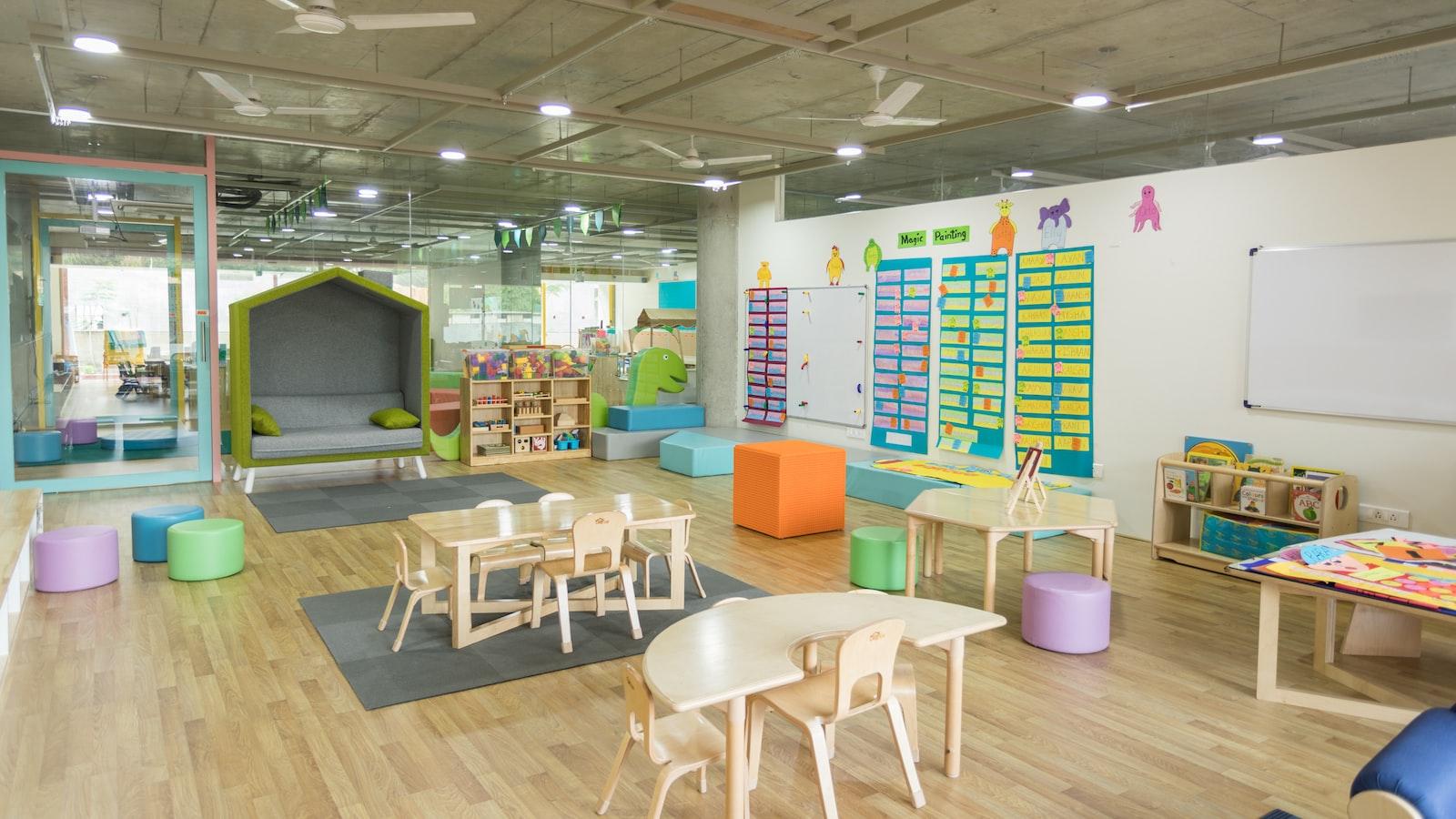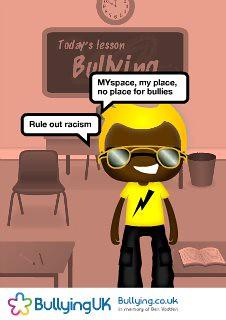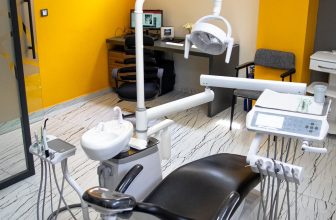
In a world where social media platforms have greatly evolved and diversified, it’s easy to overlook the once-revolutionary pioneer of online networking – Myspace. While its heyday may seem like a distant memory, there’s no denying its enduring appeal amongst a niche group of users. Are you among those who still find value in Myspace’s unique features and wish to make the most of this platform even within the confines of your school’s internet policies? Look no further! In this informative guide, we will delve into the realm of Myspace and discuss effective strategies to utilize this iconic platform while adhering to school regulations. Whether you are looking to connect, share or reminisce, we’ve got the insights and solutions to ensure a seamless Myspace experience within your educational environment. So, let’s explore the possibilities and unlock the potential of Myspace at school!
Introduction to Using Myspace at School
Using social media at school can be a fun and engaging way to connect with classmates and stay updated on school events. Myspace, known for its customizable profiles and music player feature, can be a great platform to use for socializing. In this post, we will go over some important guidelines and tips on how to effectively use Myspace at school.
Privacy settings: Ensuring your privacy is crucial when using any social media platform, especially at school. Take some time to review and update your privacy settings on Myspace. Consider making your profile private, so only approved friends can access your content. This will help protect your personal information from strangers and maintain a safe online environment.
Choose appropriate content: Remember that Myspace is a public platform, and your profile can be seen by anyone. Be mindful of the content you post and share, as it reflects your online reputation. Avoid posting anything that could be offensive or inappropriate, such as explicit language, discriminatory remarks, or offensive images. Keep your content positive and respectful to foster a healthy online community.
Connect with classmates: Myspace is a great way to connect with your fellow classmates and build friendships. Use the search feature or mutual friends to find and add your classmates to your friend list. This will allow you to stay up to date with their activities and interests. Engage in conversations, comment on their posts, and share common interests to foster a positive online community within your school.
Keep up with school events: Myspace can be a useful tool to stay informed about school events and activities. Follow official school profiles or join groups dedicated to sharing updates about school events. This way, you won’t miss out on any important announcements, such as sports games, club meetings, or school dances. Stay active on Myspace and be involved in your school community’s online presence.
Be mindful of distractions: While using Myspace at school can be enjoyable, it’s important to prioritize your studies and not let it become a distraction. Set boundaries for yourself by designating specific times for socializing on Myspace. Use it as a reward after completing your schoolwork or during breaks. Remember, your education should always come first.
Using Myspace at school can be a fun way to connect with classmates and stay updated on school events. By following these guidelines and tips, you can create a positive and safe online presence on Myspace while maintaining your focus on academics. Remember to be mindful of your privacy settings, choose appropriate content, connect with classmates, stay informed about school events, and manage your time effectively to make the most out of this social media platform.

Understanding the Benefits of Using Myspace for Educational Purposes
Myspace may be known for its role in the early days of social media, but it also offers several benefits for educational purposes. By incorporating Myspace into the classroom, educators can take advantage of its unique features to enhance learning experiences. In this post, we will explore how Myspace can be used effectively in schools, highlighting its benefits and providing practical tips on implementing it in the educational environment.
Sharing and Collaboration:
One of the key benefits of using Myspace for educational purposes is its ability to facilitate sharing and collaboration among students and educators. Through Myspace, teachers can create dedicated groups or pages where students can share their work, exchange ideas, and collaborate on projects. This fosters a sense of community, encourages peer-to-peer learning, and promotes active participation.Multimedia Integration:
Myspace provides excellent opportunities for incorporating multimedia content into the educational process. With Myspace’s support for audio, video, and image uploads, educators can create dynamic and engaging lessons. Teachers can upload educational videos, share audio clips, or even create interactive presentations to supplement traditional teaching methods. This multimedia integration helps cater to different learning styles and makes the learning experience more enjoyable for students.Networking and Professional Development:
Myspace also serves as a platform for networking and professional development opportunities for educators. Teachers can connect with colleagues across the globe, join educational groups, and participate in discussions to exchange ideas and best practices. By leveraging Myspace’s networking capabilities, educators can tap into a vast pool of knowledge and experiences to enhance their teaching techniques and stay updated with the latest trends in education.Parent-Teacher Communication:
In addition to benefiting students and educators, Myspace can also improve communication between parents and teachers. By using Myspace to share updates, progress reports, and important announcements, teachers can keep parents informed and involved in their child’s education. This seamless communication ensures a stronger partnership between parents and teachers, fostering an environment conducive to the overall success of the student.Blogging and Reflection:
Myspace offers an excellent platform for student blogging and reflection. Teachers can create personal blogs or provide students with individual blogs to express their thoughts, analyze their learning experiences, and reflect on their progress. This practice helps students develop critical thinking skills, improve their writing abilities, and promotes self-awareness. Through these blogs, teachers can also provide personalized feedback and encourage an ongoing dialogue with their students.
In conclusion, Myspace can be a valuable tool for educational purposes. Its features such as sharing and collaboration, multimedia integration, networking, parent-teacher communication, and student blogging can greatly enhance the learning experience. By embracing Myspace as an educational resource, educators can leverage its power to create an engaging and interactive learning environment that caters to the diverse needs of students.

Ensuring Safety and Privacy Measures When Accessing Myspace at School
With the popularity of social media platforms, it’s natural for students to want to access sites like Myspace while at school. However, it’s important to ensure that safety and privacy measures are in place when doing so. By following a few guidelines and being mindful of potential risks, students can safely navigate Myspace and maintain their privacy.
Stick to school-approved devices: Most schools have designated devices or networks for students to use. It’s crucial to access Myspace only on these devices rather than using personal or unapproved devices, as school-approved ones often have safety measures in place. This reduces the risk of exposing personal information and protects against potential cyber threats.
Be cautious with personal information: Myspace, like any other social media platform, asks for personal information during the sign-up process. It’s important to exercise caution and think twice before sharing sensitive details such as addresses, phone numbers, or even full names. Sharing too much personal information can increase vulnerability to online scams or identity theft.
Adjust privacy settings: Myspace provides users with customizable privacy settings. Take advantage of these options to ensure that only trusted friends have access to personal information and content. By limiting the visibility of your profile, posts, and photos, you can maintain a higher level of privacy and minimize the chances of unwanted interactions or cyberbullying.
Utilize strong and unique passwords: The importance of using strong and unique passwords cannot be stressed enough. This applies not only to Myspace but to all online accounts. Opt for a combination of uppercase and lowercase letters, numbers, and symbols to create a secure password unique to Myspace. Also, don’t reuse the same password for different accounts, as this can put all your online profiles at risk.
Avoid engaging with malicious content: Myspace, like any other social media platform, occasionally contains content that may be inappropriate or malicious. It’s essential to remember not to click on suspicious links or engage with posts that seem questionable. Being cautious and exercising skepticism towards unknown or unverified content can help protect yourself and your personal information while using Myspace.
In conclusion, accessing Myspace at school can be done safely by following a few simple steps. Stick to school-approved devices, be cautious with personal information, adjust privacy settings, utilize strong and unique passwords, and avoid engaging with malicious content. By implementing these measures, students can enjoy the benefits of Myspace while keeping their safety and privacy intact.
Recommendations for Using Myspace to Enhance Learning Experiences
<h3>1. Create a safe and controlled online environment</h3>
<p>Before integrating Myspace into the classroom, it is essential to establish clear guidelines and expectations for student behavior online. Encourage students to create private profiles, ensuring that their personal information is not accessible to strangers. Emphasize the importance of respectful online interactions and teach them about privacy settings.</p>
<p>To enhance safety, provide students with an overview of potential risks and how to navigate them, such as being cautious when accepting friend requests, avoiding sharing sensitive information, and reporting any inappropriate content or cyberbullying incidents.</p>
<h3>2. Foster collaboration and communication</h3>
<p>One of the greatest strengths of Myspace as an educational tool is its ability to facilitate collaboration among students. Encourage them to join relevant groups or communities where they can connect with peers who share similar interests or academic goals. Within these groups, they can engage in discussions, share educational resources, and provide feedback to one another.</p>
<p>Additionally, consider using Myspace as a platform for communication between students and teachers. Create class-specific profiles or pages where important announcements, assignments, and resources can be shared. This way, students can easily access information and ask questions, promoting a continuous and efficient learning experience.</p>
<h3>3. Incorporate multimedia elements</h3>
<p>Myspace provides an excellent opportunity to incorporate multimedia elements into lessons. Encourage students to create engaging profiles by integrating images, videos, and audio relevant to their interests or the subject being studied. This allows them to express themselves creatively while creating a dynamic and visually appealing online presence.</p>
<h3>4. Facilitate self-expression and creativity</h3>
<p>Myspace can serve as a platform for students to showcase their talents, interests, and projects. Encourage them to personalize their profiles by sharing their artwork, music compositions, or creative writing pieces. By embracing self-expression, you empower students to explore their passions and develop their creativity, enhancing their overall learning experience.</p>
<h3>5. Monitor and evaluate progress</h3>
<p>Regularly monitor and evaluate the impact of using Myspace in the classroom. Assess how students are engaging with the platform and its influence on their learning experience. Ensure that they are using the online tool responsibly and respectfully.</p>
<p>Consider using qualitative and quantitative measures to assess the effectiveness of integrating Myspace, such as students' active participation, improved collaboration, or the quality of their contributions to discussions. Adapt and refine your approach based on the feedback received, ensuring the continuous improvement of the learning experience.</p>
Optimizing Myspace Usage for Academic Collaboration
Myspace, once a popular social networking platform, can also be a valuable tool for academic collaboration in a school setting. By optimizing your Myspace usage, you can create a virtual space that promotes collaboration, knowledge sharing, and improved communication among students and teachers alike. In this post, we will explore how Myspace can be utilized effectively for academic purposes.
Organize your Myspace profile: Begin by customizing your Myspace profile to reflect your academic interests. Use a professional profile picture and fill out the “About Me” section with relevant information such as your area of expertise or current courses. This will allow others to quickly identify your academic background and interests, providing a solid foundation for collaboration.
Create and join academic groups: Myspace offers the option to join or create groups, which can serve as dedicated spaces for academic collaboration. Start by searching for existing groups related to your field of study or create your own group for a specific project or topic. Within these groups, you can share resources, engage in discussions, and work collaboratively on assignments or research.
Utilize Myspace blogs: Blogs offer an excellent platform for sharing academic insights, reflections, and engaging in discussions with fellow students and teachers. Consider starting a blog focused on your academic interests, research projects, or coursework. Encourage others to read and comment on your posts, fostering a vibrant academic community within your Myspace network.
Share and review educational resources: Myspace enables you to share educational resources, such as articles, videos, or online textbooks, with others. Utilize the built-in media features to showcase your findings or create interactive presentations. Additionally, leverage the power of metadata and tags to categorize and organize resources effectively, making it easier for others to discover and access relevant materials.
Engage in open discussions: Myspace provides various communication tools, such as messaging, instant chat, and forum features. Use these to facilitate open discussions on academic topics or to exchange ideas with your peers. By actively participating in discussions, you can benefit from the diverse perspectives and insights of others, fostering a collaborative and intellectually stimulating environment.
In conclusion, while Myspace may have initially been associated with social networking, it can also be harnessed as a powerful platform for academic collaboration. By optimizing your Myspace usage through thoughtful organization, group creation, blogging, resource sharing, and engaging in open discussions, you can create a vibrant virtual space that supports academic excellence and collaboration within your school community.
Q&A
Q: Can students access Myspace at school?
A: The ability for students to access Myspace at school depends on school policies and internet security measures in place. While some schools may allow access, others may block or restrict access to social networking sites.
Q: How can students check if Myspace is accessible at their school?
A: Students can directly check if Myspace is accessible by attempting to access the website through school computers or devices connected to the school’s network. However, it’s important to note that students should respect school policies and restrictions.
Q: What are some potential benefits of using Myspace at school?
A: Myspace can provide a platform for students to connect with others who share similar interests, engage in creative activities, or find educational resources related to music, art, or other fields. It can also serve as a platform for sharing and discovering new talent.
Q: Are there any risks associated with using Myspace at school?
A: Yes, there are potential risks associated with using Myspace at school. These can include distractions from academic work, exposure to inappropriate content, cyberbullying, or interacting with strangers who may have malicious intentions. School policies often aim to mitigate these risks.
Q: What should students do if Myspace is blocked at their school?
A: If Myspace is blocked at their school, students should respect the school’s decision and focus on productive activities during school hours. There are alternative platforms available for connecting with others and exploring common interests outside of school.
Q: How can students safely use Myspace at school?
A: Students can use Myspace safely at school by adhering to the school’s policies and guidelines. This may include refraining from sharing personal information online, avoiding interactions with strangers, and immediately reporting any inappropriate behavior or content to a trusted adult.
Q: Are there any alternatives to using Myspace at school?
A: Yes, there are numerous alternative websites and social networking platforms that students can use at school, depending on their school’s policies. Examples include educational forums, class-specific platforms, or school-sanctioned social media accounts.
Q: How can educators and schools address concerns related to Myspace usage?
A: Educators and schools can address concerns related to Myspace usage by developing clear policies and guidelines regarding internet and social media usage on campus. Regularly educating students about responsible online behavior and the potential risks associated with social networking sites is also crucial.
Q: Is it recommended for students to use Myspace during school hours?
A: It is generally not recommended for students to use Myspace or any social networking platform during school hours, as it can interfere with their academic focus. School hours should be dedicated to learning and participating in educational activities.
Q: Can using Myspace at school have any positive educational outcomes?
A: While using Myspace during school hours may not typically have direct positive educational outcomes, there can be exceptions. For example, a teacher may incorporate Myspace in a specific project or assignment to teach digital citizenship, creativity, or collaborative skills. These instances should align with the school’s educational goals and be closely supervised by teachers. In conclusion, this article has aimed to provide you with a comprehensive guide on how to use Myspace at school. While Myspace may have lost its popularity over the years, it still holds significance for some individuals and can serve as a platform for creative self-expression and communication. However, it is essential to exercise caution and follow school policies and guidelines when accessing Myspace within an educational setting.
By following the steps outlined in this article, you should be able to access Myspace safely and responsibly at school. Be sure to obtain permission from your school administration, adhere to any restrictions or regulations they may have in place, and always be mindful of your online activity. Remember, Myspace can be a useful tool for connecting with friends, showcasing your interests, and networking with others who share common goals and passions.
In conclusion, Myspace can offer an enjoyable online experience when used responsibly and within the boundaries set by your school. Embrace the opportunity to express yourself creatively, engage in meaningful discussions, and foster connections with peers who share your interests. With the knowledge gained from this article, you can now navigate Myspace confidently, making the most of this unique social media platform while maintaining a neutral and respectful approach within the school environment.






